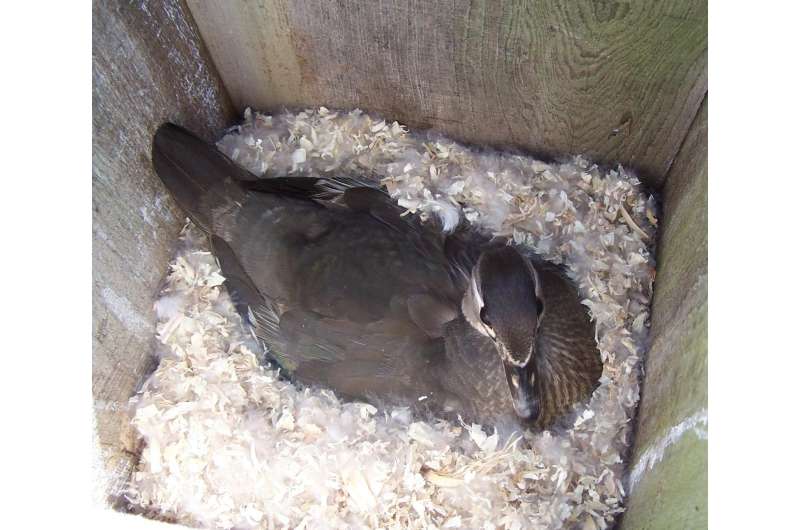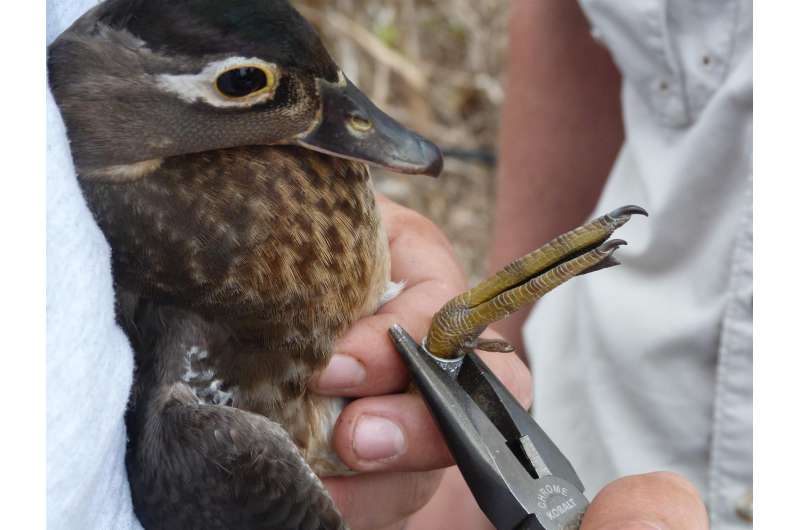Individual quality trumps reproductive tradeoffs in ducks

Not all ducks are created equal. In female Wood Ducks, variation in individual quality is what matters for breeding success and survival, according to the results of a new long-term study being published in The Auk: Ornithological Advances.
Drawing on 11 years of data on almost 500 ducks, Robert Kennamer of the University of Georgia's Savannah River Ecology Laboratory and Gary Hepp and Bradley Alexander of Auburn University found a positive relationship between annual survival and nesting success—females that were better at raising their offspring were also better at surviving. This contradicts an established theory predicting the existence of a tradeoff between current reproductive effort and future success.
"Theory predicts that current reproductive effort will negatively affect survival and future reproduction," says Hepp. "In our long-term study of Wood Ducks, however, females that nested successfully were not less likely to survive and nest successfully again the following year compared to females that had nested unsuccessfully." This suggests that there's a high degree of variation between individuals, with healthier, higher-quality females living longer and producing more offspring.
The study was carried out at the Department of Energy's Savannah River Site in South Carolina. "Federal legislation promoting the conservation and protection of the environment provided the initial funding for Wood Duck population monitoring beginning in 1981 in an area of the SRS potentially impacted by thermal water releases from the restart of a nuclear production reactor," according to Kennamer. "When that resulted in a wealth of interesting data, we secured support for continuing the project much longer than first anticipated."
The researchers suggest that future studies should examine the factors that influence individual variation in migratory birds and explore their impacts on the successful management of these species. Birth and death rates and what causes them to vary are key to increasing population sizes, guiding the decisions of wildlife managers and conservationists, and this study highlights how much we still have left to learn about how they work.

More information: "Effects of current reproductive success and individual heterogeneity on survival and future reproductive success of female Wood Ducks" May 25, 2016, www.aoucospubs.org/doi/full/10.1642/AUK-15-83.1
Provided by The Auk
















